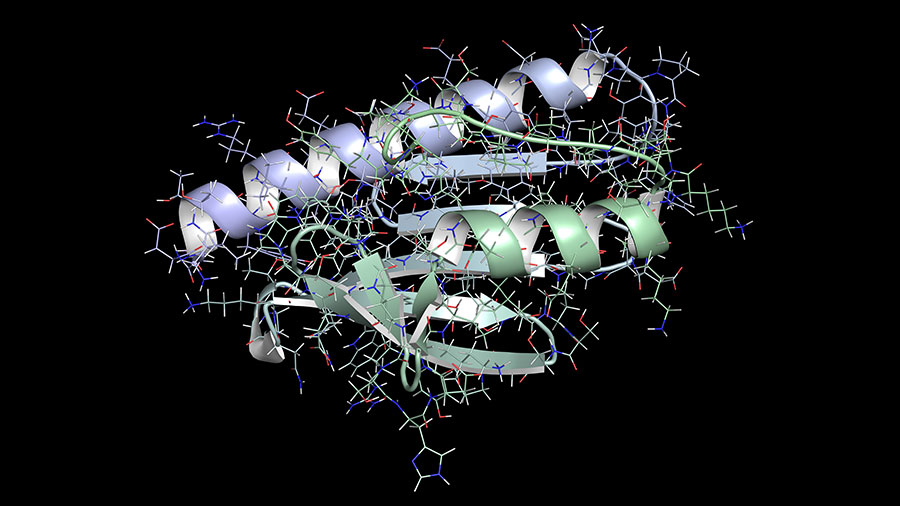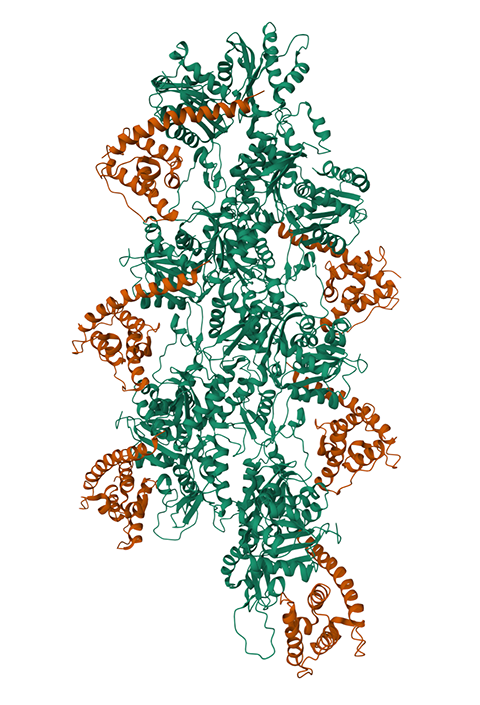Ataxia: A symptom and a disease
Ataxia means “without coordination” and acts as an umbrella term to a group of neurological disorders that affect a person’s balance and muscle control. While the cause of ataxia can vary, it is usually a result of injury to the cerebellum, a part of the brain located near the back of the skull that is responsible for movement and balance but can also be caused by injury to other nerves in the spinal cord.
Ataxia can be separated into three major categories:
-
Cerebellar: Damage to the cerebellum affecting vision and balance.
-
Sensory: Involves the loss of proprioception, the sense of limb position and movement, and is usually caused by loss of signal in the spinal cord.
-
Vestibular: Damage to the vestibular canal in the ear which affects balance and can cause vertigo, nausea and vomiting.
Ataxia can be a symptom of a disease or a disease in itself and can be acquired (as a result of trauma or stroke), genetic (autosomal dominant and autosomal recessive) or sporadic (comorbidity with other diseases, including multiple sclerosis). Furthermore, ataxia can be continuous or episodic, demonstrating the wide variance observed in this disease.
Because the causes and genes associated with ataxia can differ greatly, treatments do too. Some address symptoms and others the underlying cause (e.g. antibacterial or antiviral medications if the ataxia is caused by infection).

For example, episodic ataxia, of which impaired pyruvate metabolism has been associated, can be treated with acetazolamide (Diamox), a diuretic that can inhibit carbonic anhydrase and subsequently reduce lactate and pyruvate levels in the brain. Additionally, in February, the Food and Drug Administration approved omaveloxolone (Skyclarys) for the first-ever treatment of Friedreich’s ataxia. It acts to rescue Nrf2 from degradation, subsequently preventing oxidative stress, and inhibit the proinflammatory NF-kB pathway.

Drug discovery is ongoing for ataxia and ataxia-associated disorders. In 2022, researchers uncovered the specific pathophysiology for spinocerebellar ataxia type 5. They published their results in the journal Scientific Reports.
SCA5 is a slow, progressive type of ataxia caused by a missense mutation, L253P, in the β-III-spectrin protein. β-III-spectrin is integral for the development of Purkinje cells, nerve cells that reside in the cerebellum. Under normal conditions, β-III-spectrin binds to α-spectrin and actin filaments to form a spectrin-actin cytoskeleton, lining the cytoplasmic side of the plasma membrane and mediating Purkinje cell resiliency and axon connections.
The L253P mutation is located in the actin binding domain of β-III-spectrin and causes a 1,000-fold increase in actin affinity. This subsequently results in an impairment in Purkinje cell dendrite stability and outgrowth, highlighting the importance of proper binding of β-III-spectrin to actin.
A paper published in March the Journal of Biological Chemistry reported the use of an in vitro, protein–protein interaction assay, fluorescence resonance energy transfer, to screen a compound library of FDA-approved drugs to identify compounds that interfere with the β-III-spectrin and actin interaction as an early drug-development campaign. The researchers who conducted the study identified several hit compounds that show reduced binding of β-III-spectrin to actin, and the results suggest these compounds have the potential to be developed as SCA5 therapeutics.
Because ataxia can be caused by a variety of factors, drug development can be tricky. Raising awareness about ataxia and its pathophysiology in different disease states will help to advance the general public’s understanding and the development of further medical interventions to improve the quality of life in those with ataxia.
Enjoy reading ASBMB Today?
Become a member to receive the print edition four times a year and the digital edition monthly.
Learn moreGet the latest from ASBMB Today
Enter your email address, and we’ll send you a weekly email with recent articles, interviews and more.
Latest in Science
Science highlights or most popular articles

Bacteriophage protein could make queso fresco safer
Researchers characterized the structure and function of PlyP100, a bacteriophage protein that shows promise as a food-safe antimicrobial for preventing Listeria monocytogenes growth in fresh cheeses.

Building the blueprint to block HIV
Wesley Sundquist will present his work on the HIV capsid and revolutionary drug, Lenacapavir, at the ASBMB Annual Meeting, March 7–10, in Maryland.

Gut microbes hijack cancer pathway in high-fat diets
Researchers at the Feinstein Institutes for Medical Research found that a high-fat diet increases ammonia-producing bacteria in the gut microbiome of mice, which in turn disrupts TGF-β signaling and promotes colorectal cancer.

Mapping fentanyl’s cellular footprint
Using a new imaging method, researchers at State University of New York at Buffalo traced fentanyl’s effects inside brain immune cells, revealing how the drug alters lipid droplets, pointing to new paths for addiction diagnostics.

Designing life’s building blocks with AI
Tanja Kortemme, a professor at the University of California, San Francisco, will discuss her research using computational biology to engineer proteins at the 2026 ASBMB Annual Meeting.

Cholesterol as a novel biomarker for Fragile X syndrome
Researchers in Quebec identified lower levels of a brain cholesterol metabolite, 24-hydroxycholesterol, in patients with fragile X syndrome, a finding that could provide a simple blood-based biomarker for understanding and managing the condition.

